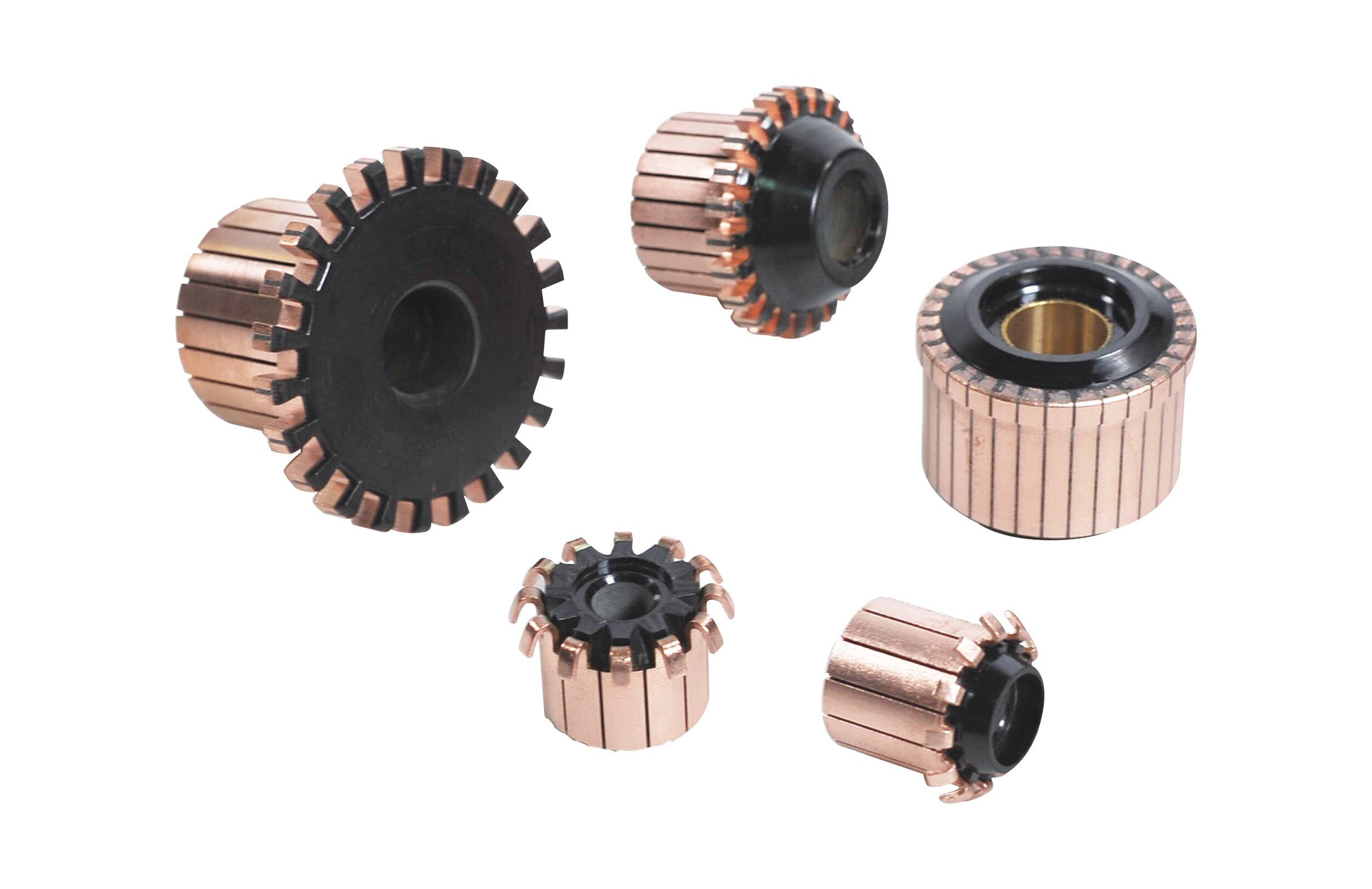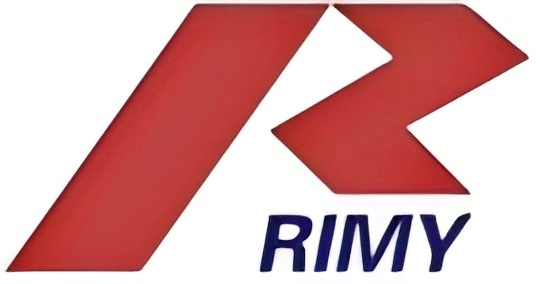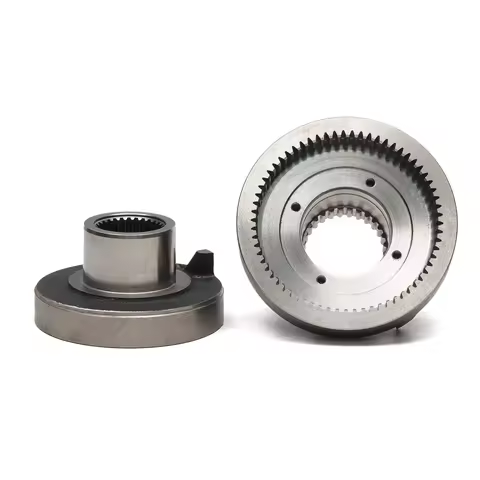Innovative Weight Reduction Strategies with Hollow Worm Shafts in Automotive Motors for EV Drivetrains
As the automotive industry rapidly shifts toward electric vehicles (EVs), the need for high-efficiency drivetrains has never been greater. One crucial factor in achieving optimal performance and extended range in EVs is weight reduction. Among the various components in an EV drivetrain, the use of hollow worm shafts is proving to be an innovative solution for reducing weight while maintaining the required torque and power output. In this blog, we will explore how hollow worm shafts are revolutionizing automotive motors, especially in EV drivetrains, and how they contribute to lighter, more efficient vehicles.
The Role of Hollow Worm Shafts in Automotive Motor Design
Hollow worm shafts are increasingly being adopted in automotive motor systems, especially in electric vehicles. These shafts are designed with a hollow core, allowing for significant weight reduction without compromising strength or performance. The role of these shafts in automotive motor design is multifaceted, as they enhance efficiency, reduce energy consumption, and optimize overall vehicle performance.
What Makes Hollow Worm Shafts Ideal for EV Motors
In electric vehicles, the drivetrain plays a pivotal role in determining energy efficiency and performance. Hollow worm shafts, due to their unique design, are ideal for EV applications because they provide a perfect balance between weight reduction and structural integrity. The hollow core reduces the material used in the shaft, leading to a lighter component, which directly contributes to an overall reduction in the vehicle's weight. This is particularly beneficial in EVs, where reducing weight leads to better range and efficiency.
Weight Reduction and Its Impact on EV Performance
Reducing weight in an EV drivetrain is crucial for enhancing energy efficiency and extending the range of the vehicle. Lighter components require less energy to move, allowing for more efficient use of the battery. In this context, hollow worm shafts offer a significant advantage over solid shafts, as they contribute to reducing the weight of the drivetrain without sacrificing torque or power. By integrating hollow worm shafts into EV motors, automakers can design lighter vehicles that consume less energy, making them more competitive in the growing electric vehicle market.

How Hollow Worm Shafts Contribute to Efficiency in EV Drivetrains
Improved Torque Transmission
One of the key advantages of hollow worm shafts is their ability to transmit torque effectively while maintaining reduced weight. The hollow core design ensures that the shaft maintains sufficient strength to handle the required torque, which is crucial for maintaining vehicle performance. This design allows for a more compact and lightweight motor, which is essential for EVs where every gram counts in improving efficiency.
Reduction in Power Loss
Power loss is a significant concern in any drivetrain, but especially in EVs where energy conservation is key. Hollow worm shafts help reduce power loss by minimizing friction, which is a common issue with traditional solid shafts. The unique design of the hollow shaft creates a more efficient transfer of power from the motor to the wheels, reducing losses and ensuring that more of the energy stored in the battery is used effectively. This, in turn, results in a more efficient EV drivetrain, which is essential for extending range and optimizing energy use.
Enhancing the Overall Vehicle Efficiency
A reduction in weight leads to less energy required to move the vehicle, and this directly enhances the vehicle's overall efficiency. In addition to the lightweight nature of hollow worm shafts, their low friction characteristics also contribute to enhanced efficiency. By optimizing both weight and energy loss, hollow worm shafts enable automotive manufacturers to create EV drivetrains that perform better while consuming less power, which is a key consideration for consumers looking for vehicles that offer both range and performance.
Advantages of Hollow Worm Shafts in EV Drivetrain Integration
Enhanced Durability and Strength
While hollow worm shafts are lighter than their solid counterparts, they are engineered to maintain high strength and durability. This is crucial for EV applications, where the drivetrain components must withstand high loads and stresses during operation. The hollow design does not compromise the shaft’s ability to bear the necessary loads and transmit power efficiently, making it an ideal choice for automotive applications. The use of high-strength materials like alloys further enhances the durability of the shaft, ensuring that it can withstand the forces generated by high-performance EV drivetrains.
Compact Design for Space Efficiency
As electric vehicle designs become more compact and efficient, space optimization is a key consideration. Hollow worm shafts offer a compact solution that helps save space within the motor assembly. Their reduced weight and size make them easier to integrate into smaller motor designs, allowing for more efficient use of space in the vehicle's drivetrain. This can lead to better packaging and potentially reduce the overall size of the drivetrain, which is beneficial for manufacturers focused on creating compact, efficient electric vehicles.
Reduction in Component Complexity
A key advantage of hollow worm shafts in EV drivetrains is the reduction in overall component complexity. These shafts can replace multiple components, simplifying the drivetrain design and assembly. Fewer components mean less assembly time, reduced risk of errors, and ultimately a more reliable motor system. The use of hollow worm shafts contributes to both weight reduction and the simplification of the drivetrain, making it an attractive option for automakers aiming for streamlined production processes.
The Manufacturing Process of Hollow Worm Shafts
Advanced Materials for Hollow Worm Shafts
The choice of material for hollow worm shafts plays a critical role in determining their performance. High-strength alloys or composite materials are commonly used to ensure the shafts are both lightweight and durable. These materials must be carefully selected to withstand the mechanical stresses encountered in EV drivetrains while still providing the benefits of weight reduction. Additionally, the material must be resistant to wear and corrosion, ensuring long-term reliability in the harsh conditions faced by automotive motors.
Precision Engineering and Machining
To achieve the high degree of precision required for hollow worm shafts, advanced machining techniques are used. Computer numerical control (CNC) machines, laser cutting, and other precision technologies are employed to create the intricate designs and fine tolerances needed for hollow worm shafts. These advanced manufacturing processes ensure that the shafts are both lightweight and strong, with minimal imperfections that could affect their performance in automotive motors. The ability to precisely control the thickness of the shaft walls and the size of the hollow core is key to achieving the desired strength-to-weight ratio.
Specialized Heat Treatment Processes
In addition to precision machining, hollow worm shafts often undergo specialized heat treatment processes to improve their material properties. These processes, such as carburizing or nitriding, help enhance the hardness and wear resistance of the shafts. Heat treatment also helps to optimize the mechanical properties of the shaft, ensuring that it can handle the high loads and stresses encountered in EV applications without compromising its structural integrity. These treatments are essential for ensuring the longevity and reliability of the hollow worm shafts in automotive motors.
Future Prospects of Hollow Worm Shafts in EV Drivetrains
Ongoing Innovations in Shaft Design
The design of hollow worm shafts is continuously evolving to meet the increasing demands of the automotive industry. Engineers are working on developing new materials and design improvements that can further reduce weight while enhancing the strength and efficiency of the shafts. These innovations may include the use of advanced composites, optimization of the hollow core design, and improved manufacturing techniques. As these innovations progress, hollow worm shafts will likely become even more integral to EV drivetrain designs.
Integration with Other Lightweight Components
The future of EV drivetrains will see an increasing integration of lightweight components, from the frame to the motor. Hollow worm shafts will likely be combined with other advanced materials and lightweight components to create an ultra-efficient, high-performance drivetrain. As automakers strive to achieve the perfect balance between weight, performance, and energy efficiency, hollow worm shafts will play an important role in the development of next-generation EV drivetrains.
Market Trends and the Growing Demand for Lightweight Solutions
With the increasing emphasis on sustainability and energy efficiency in the automotive industry, there is a growing demand for lightweight solutions in vehicle design. Hollow worm shafts, due to their ability to significantly reduce weight without compromising strength or performance, are well-positioned to meet this demand. As EV adoption continues to grow and automakers push for more efficient designs, the use of hollow worm shafts will become even more widespread in the automotive industry.
FAQ
How do hollow worm shafts contribute to EV efficiency?
Hollow worm shafts help reduce the weight of the drivetrain without compromising the strength needed to transmit power. Their design minimizes friction, reducing power loss and improving overall efficiency in the EV motor system.
What materials are typically used for hollow worm shafts in EV motors?
High-strength alloys, such as steel or aluminum, are commonly used for hollow worm shafts in EV motors. These materials provide the necessary durability and strength while maintaining the weight reduction benefits of the hollow design.
Can hollow worm shafts be used in other automotive applications besides EVs?
Yes, hollow worm shafts can be used in various automotive applications, including internal combustion engine vehicles and hybrid drivetrains. However, their primary benefit in EVs lies in the need for lightweight and efficient components to maximize battery life and performance.

